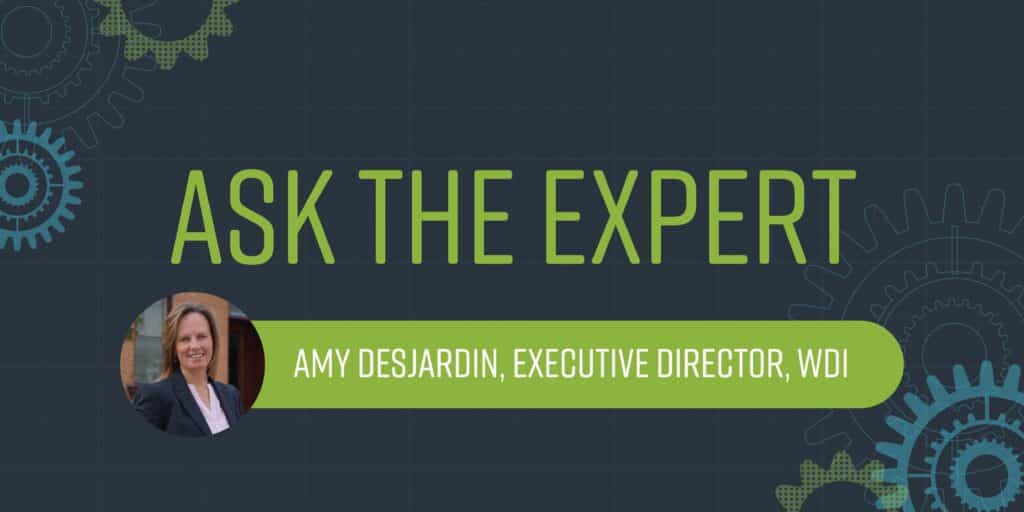For this edition of Ask the Expert, we spoke with Amy Desjardins, Executive Director of the Workforce Development Institute (WDI), a statewide nonprofit organization that strives to increase job opportunities for all New Yorkers through skills training, pre-apprenticeship programs, grants and technology projects. Its work often fills gaps not covered by other institutions or agencies, helping to facilitate projects that help labor unions, employers, educational institutions, and other workforce partners think and act differently regarding hiring, training, educating, and retaining an inclusive and productive workforce.
Tell us about Workforce Development Institute.
WDI was born out of the labor movement about 20 years ago. In 2003, WDI became a 501c3. We have 10 regional offices with central offices in Albany. Our focus is on the worker and what we can contribute to the business from the worker’s perspective. We are collaborative by design, working in partnership with labor, employers, educational institutions and community-based organizations (CBOs) who believe that family-sustaining jobs with good pay and benefits are critical to bringing people out of poverty and back into the workforce. Our goal is to set a path for workers to attain and adapt the skills necessary to compete and advance in the future of work.
Do needs and issues vary by region?
I do think there are unique challenges in each region. You can’t just paint the state with one brush. In New York City, certainly, it is the high cost of real estate. In the rural areas, there are industries that are supporting whole communities and we need to keep them alive and well. We want people to come back to New York and our upstate communities because that is where the jobs are. We need people to fill an enormous amount of jobs that are coming in construction, manufacturing, and all the supply chain ripple effects. WDI’s value is our depth of expertise and our statewide presence that empowers us to identify successful programs and pursue opportunities to scale them to other industries or regions of the state.
How are you addressing the worker shortage?
A lot of it is career awareness and exploration, the schools play a large part in that, letting kids know there is a path to these good jobs, building road and energy infrastructure and manufacturing plants for semiconductors and clean energy components or working in those facilities. We also work with employers directly to help improve job quality so that workers and applicants are motivated to apply, accept work offers, and grow their careers with them.
We work very closely with the building trades. They have on-the-job apprenticeship programs. We partnered with the New York State Building & Construction Trade Council on a statewide pre-apprenticeship program. The program focuses on traditionally enabling career exploration and providing foundational skills, including communication and problem solving.
It is also important to make sure those who may be struggling with transportation to work, or maybe childcare, receive the wraparound support they need to succeed. It takes a village. There is a tremendous amount of great work being done by CBOs all across the state and WDI has relationships with those CBOs.
Can you share some best practices for attracting and retaining workers?
First and foremost is inclusion and having an accessible workforce for people of all backgrounds. It is also important to make sure workers have a sense of advancement and aren’t just a cog on an assembly line. You want them to feel valued and that they are not just stuck in a dead-end job.
The other piece is job quality. There are so many openings; people can be a little picky. This starts with wages and compensation, but extends to benefits, workplace culture, scheduling, and being flexible in helping out with things like childcare. Addressing some of those concerns can go a long way. Take a wholistic approach because if you invest in the worker, they are more likely to stay with you.
How do you work with FuzeHub?
Most of our regional directors work closely with their local MEP centers and with FuzeHub, the statewide NY MEP center. If there are partner forums where they bring in manufacturers, WDI is often there networking to provide opportunities to collaborate on a skills gap that a manufacturer might be having, or an upgrade in technology they may need. So, it really is a collaboration we have built with FuzeHub over the years, building on the MEP network and opening doors to manufacturers across the state.

